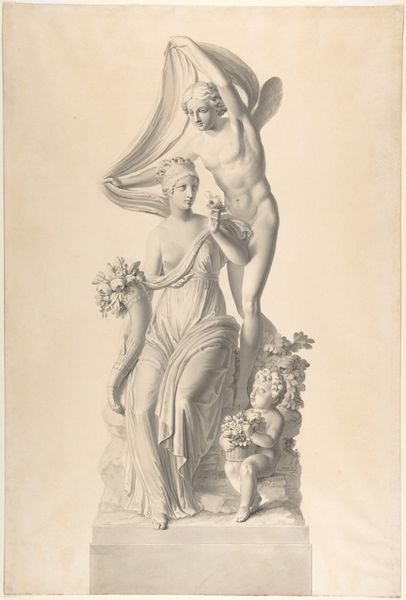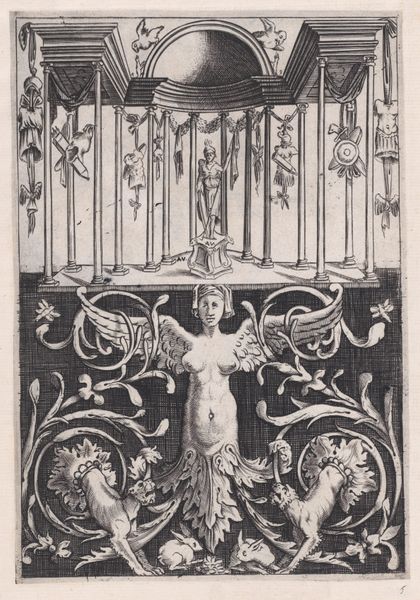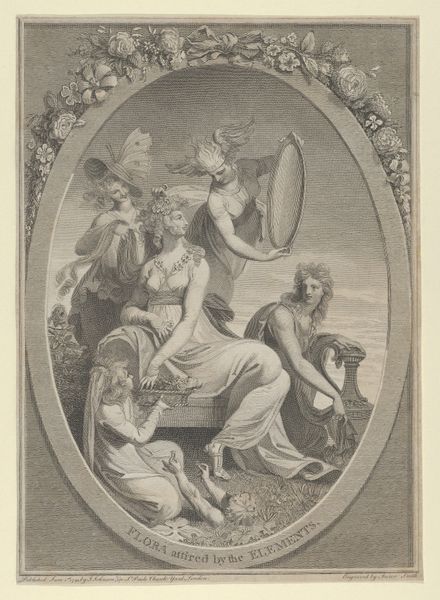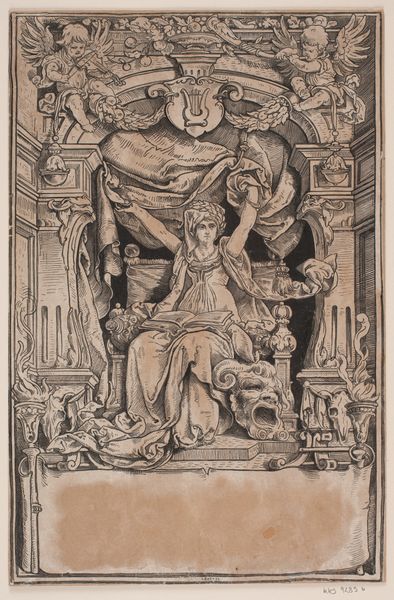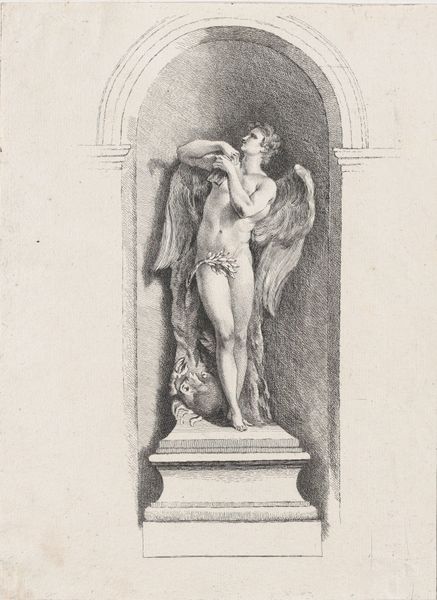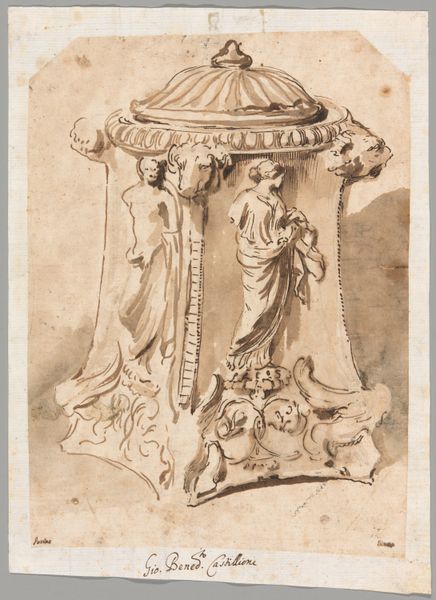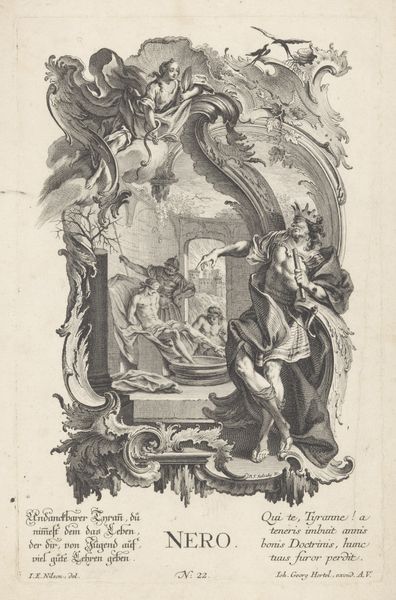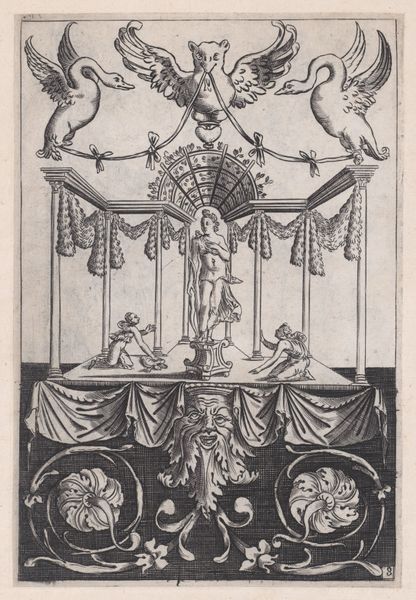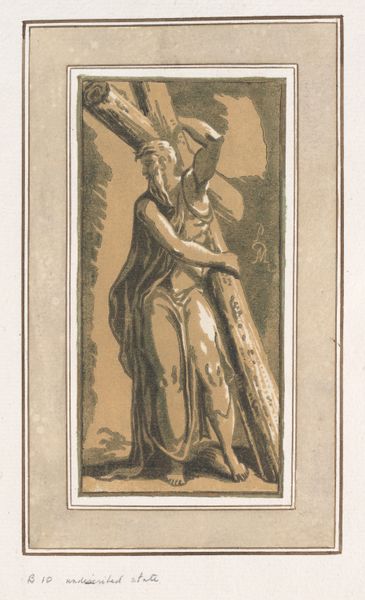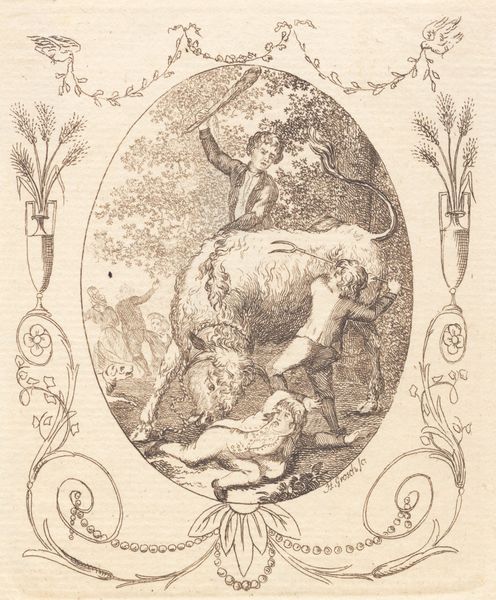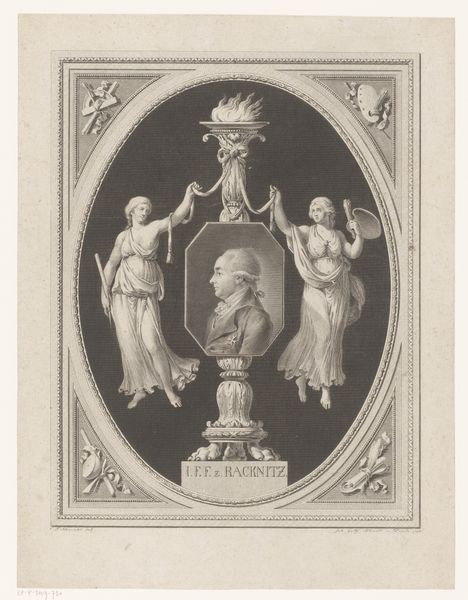
Candelabrum with Two Victory Figures (for 'Ornamenti Diversi') 1782
0:00
0:00
drawing, print
#
drawing
#
neoclacissism
#
allegory
# print
#
pen sketch
#
figuration
#
line
#
academic-art
Dimensions: sheet: 17 1/16 x 10 7/16 in. (43.4 x 26.5 cm)
Copyright: Public Domain
Editor: Here we have Giocondo Albertolli's "Candelabrum with Two Victory Figures," created in 1782. It's a pen and ink drawing intended to be a print. There is such confident linework in this drawing. The allegorical figures of Victory poised on either side make it seem to want to embody a sense of idealized, feminine virtue and power. What do you see when you look at this piece? Curator: I see the aspirations of the late 18th century, particularly within the rising bourgeois class. This design wasn't meant for a royal palace but to evoke the aesthetic of power and taste within increasingly public spaces and domestic interiors. Consider how prints like these democratized access to classically-inspired designs, influencing taste on a broad scale. What do you think that meant for how people interacted with power and beauty? Editor: It seems like this print flattens out the hierarchies of art by making grand, ornamental designs accessible to more people than ever before. It gives them a kind of cultural capital, almost. The candelabrum becomes less about utility and more about what it represents, the symbolism that comes along with Neoclassicism and access. Is that reading into it too much? Curator: Not at all! In fact, the 'Ornamenti Diversi' series to which this design belongs, demonstrates how aesthetics became entangled with social mobility. Albertolli’s candelabrum, transformed into a print, circulates through society as both instruction and aspiration. Look how the classically styled, and lightly dressed, victory figures give an implied nod back to Ancient Greece and Rome. And where did the symbols and allegories used in this piece get their meaning from? Where are people seeing the Ancient world being visually referenced at this time? Editor: Museums, probably? Archaeological digs becoming popular. I guess before you needed access to nobility or extremely expensive art objects to participate in aesthetics like this, and it was probably less common to encounter these figures anywhere besides paintings or sculpture. Curator: Exactly! And in that way this design performs a democratizing social function. Thank you, I had not quite thought of it that way until now! Editor: It's fascinating to think about how the circulation of images shapes not just taste, but social identities too.
Comments
No comments
Be the first to comment and join the conversation on the ultimate creative platform.
